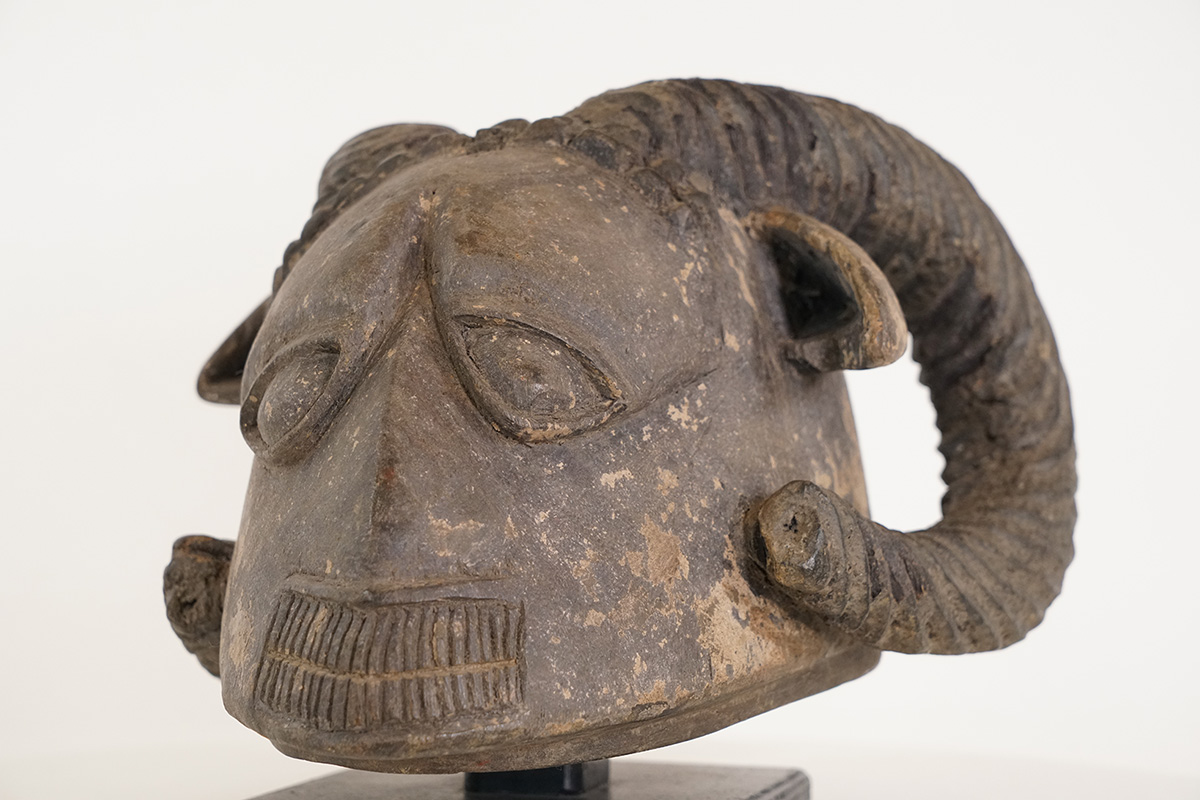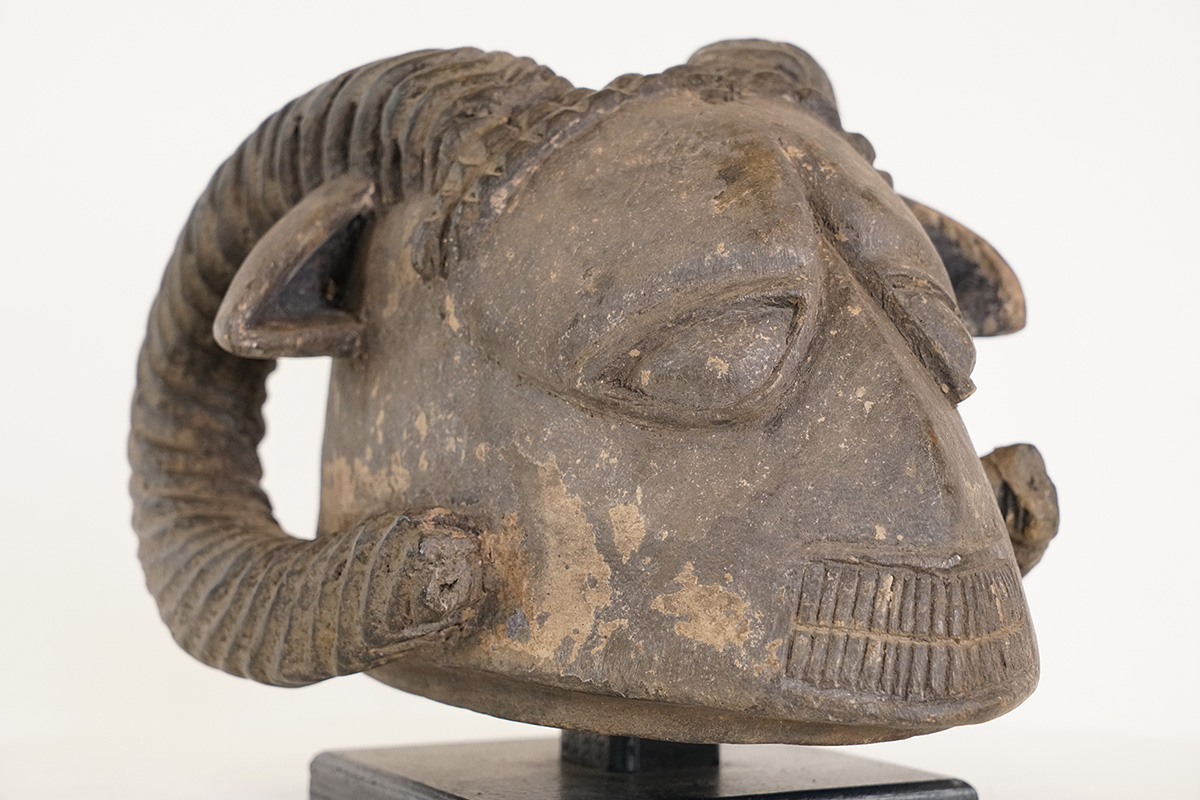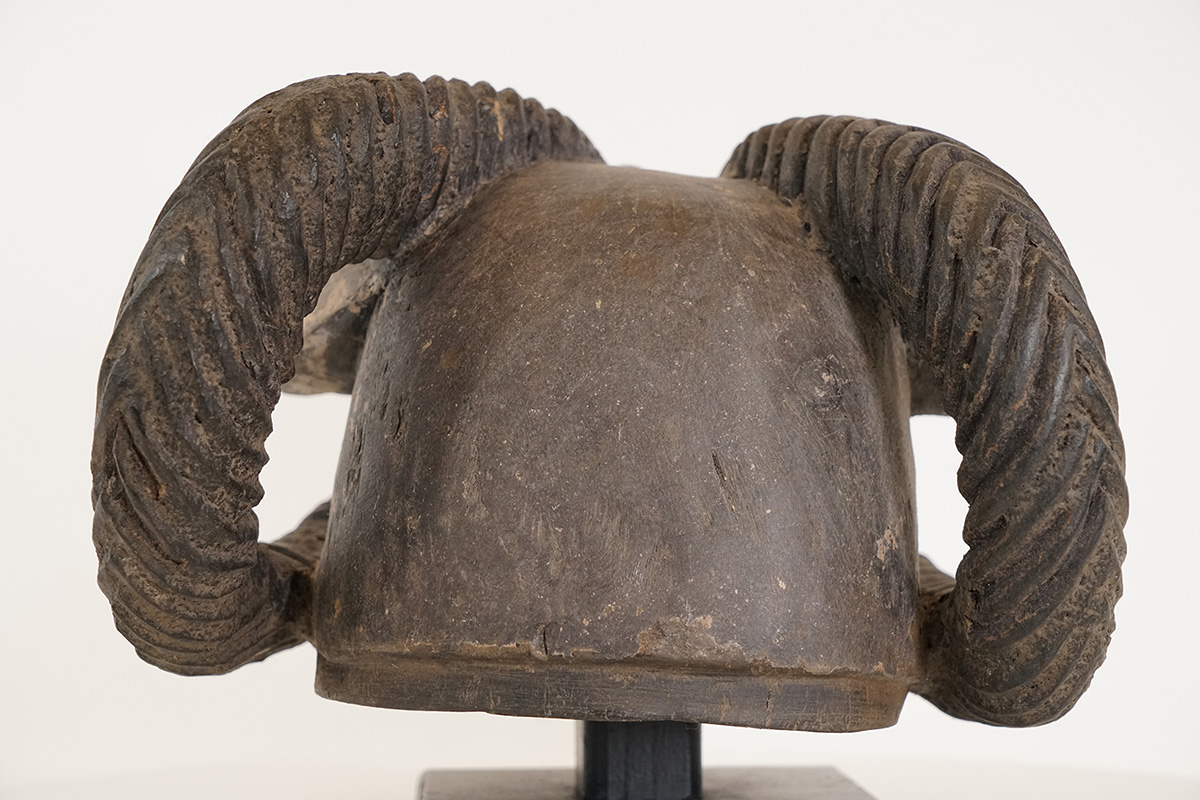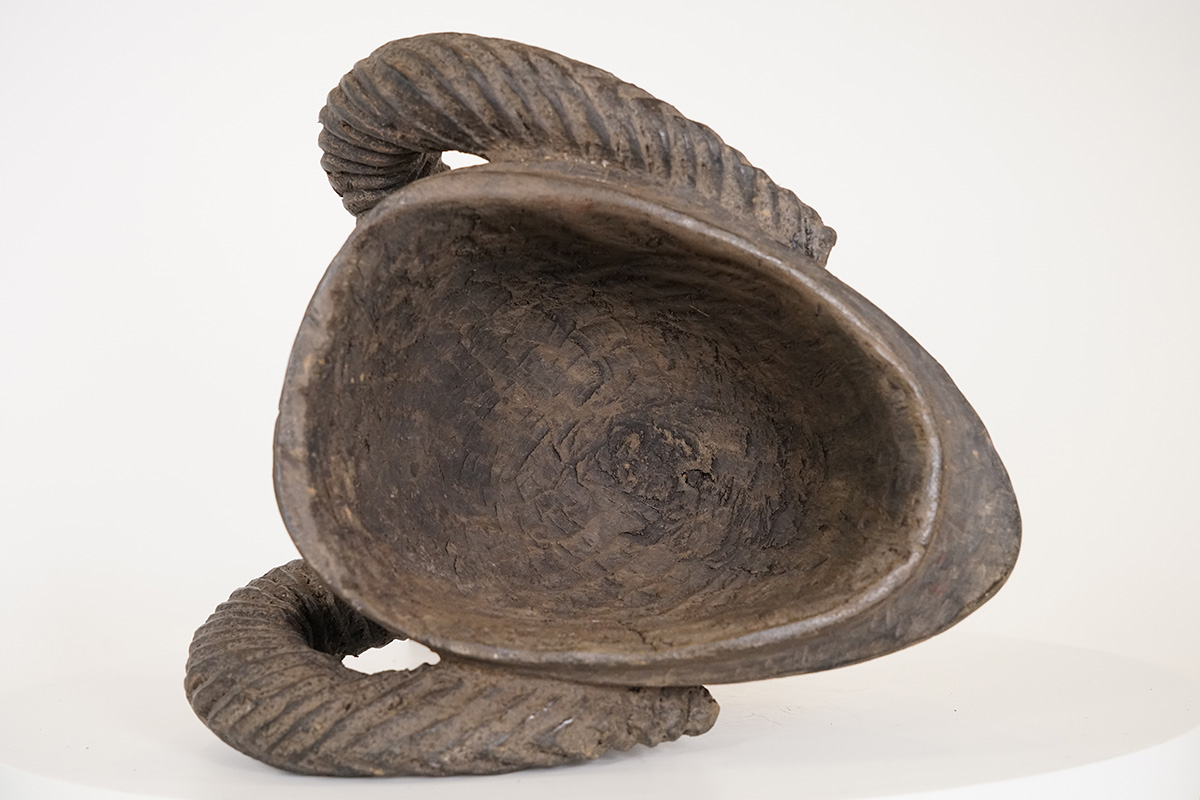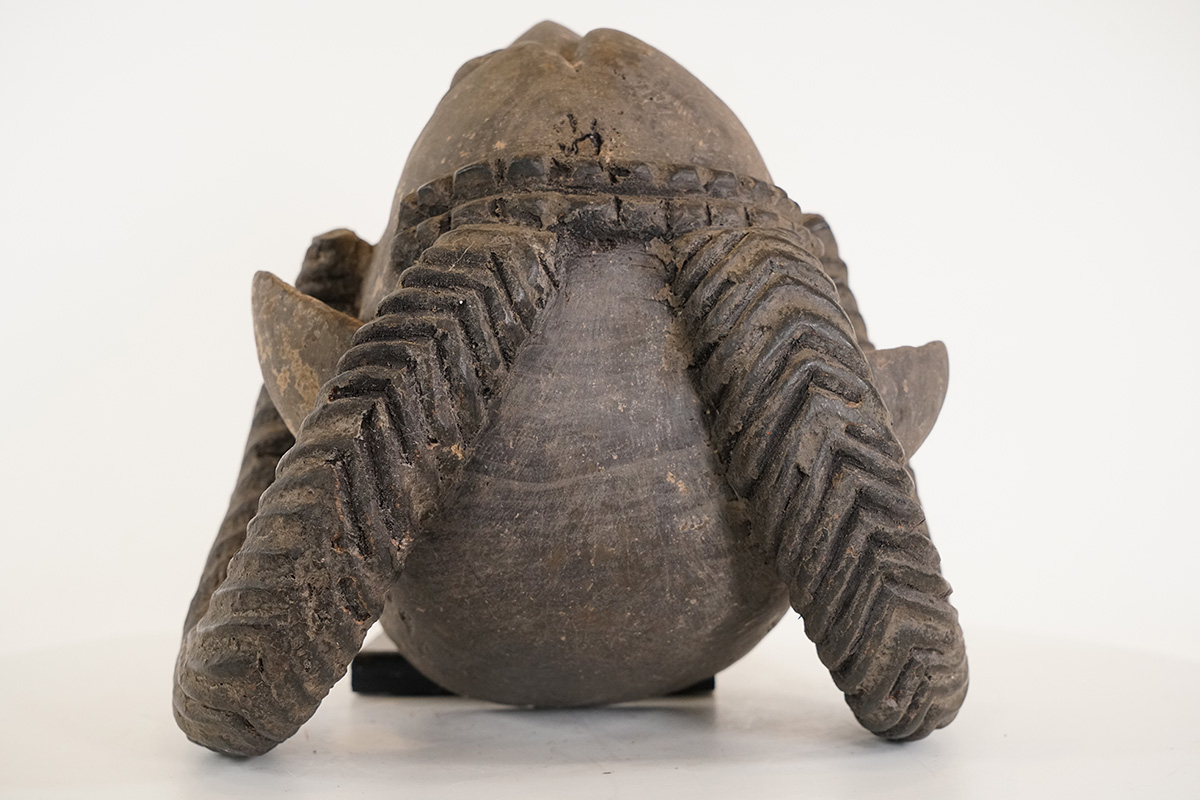This Yoruba mask was created in the style of Egungun masquerade. These masks are danced during annual ceremonies as well as funerals and initiation rites. This piece has long curved horns protruding from the head and is made to look like a ram. This mask measures 7.75 inches tall, 12 inches long and weighs 5 pounds. There are numerous scrapes and scuffs on this piece – please inspect photos. Stand is not included.
Yoruba Egungun Style Ram African Mask 12″ Long – Nigeria
$175.00
Sold

| Type of Object | Mask |
|---|---|
| Country of Origin | Nigeria |
| Ethnicity | Yoruba |
| Material | Wood, Pigment |
| Animal | |
| Approximate Age | Unknown |
| Height (Inches) | 7.75" |
| Width (Inches) | 11" |
| Depth (Inches) | 12" |
| Weight (Pounds) | 5 lbs |
| Overall Condition | Cracks, scrapes, scuffs – see photos |
| Additional Information | Egungun |
Tribe Information
About the Yoruba People
The Yoruba are the largest cultural group on the African continent, with nearly 40 million people. The word ‘Yoruba’ describes both the language and a tribe living across Nigeria and the Popular Republic of Benin, in an area of forest and savannah.
Geography
The Yoruba people’s primary living space is South-West Nigeria with substantial Yoruba communities in Benin, Togo and Sierra Leone but they are not bound by state or country borders. This area is often referred to as “Yorubaland”. Most of the terrain is either forest, woodland savannah, rich farmland or coastal swamps and lagoons.
History
The origin of the Yoruba people in Nigeria is heavily debated. Some believe they came from the east in Mecca, some say from the north in Egypt. Evidence shows that ethnically, Yoruba’s have been in the area known as Yorubaland since the 7th century BC. Scholars believe the area was probably inhabited earlier by peoples of the Nok culture. Yorubaland covers the modern-day countries of Nigeria, Togo and Benin. The term Yoruba to describe ethnicity, did not come about until the 16th century and wasn’t widely used until the 19th century. Before then, the Yoruba people were known by many names depending on who was acknowledging them. For instance, the Europeans referred to them as Akú, whereas in Cuba, they were referred to as O luku mi.
Read more about the Yoruba here.
Additional Information
About the Egungun
“Egungun masked ceremonies involve dancers who represent heavenly creatures, known as Ara Orun, capable of bringing good fortune or punishing the guilty. Egungun headdresses are worn at ceremonies related to the annual Egungun masquerade, but also appear during festivities following the death of a dignitary or during initiation ceremonies. Egungun headdresses show considerable stylistic variation and, indeed, the principal characteristic element of the Egungun dancer is his loose body-covering costume rather than a unique headdress.”

